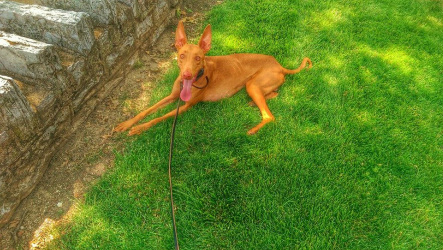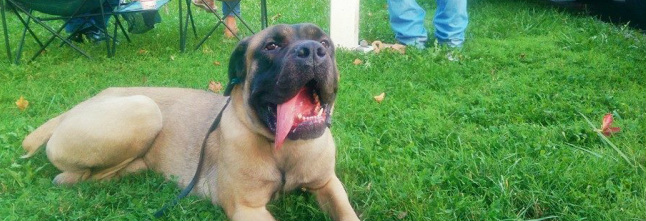|
7/28/2012 0 Comments Training methods I have a lot of people who talk to me about trainig and were filled with information about training and didn't know what they had started on or how to cotinue. This post today will outline the different styles of training and the limtations as well as the strengths and a few terms. Training dog in America was originally marked by military dog trainers and in particular William Kholer. On the other side of the beginning of a different do training style we have Marian and Keller Breland. Kholer was a great dog trainer and he employed the use of choke chains and leashes as the foundation of his training. His book can be found under The Kholer Method of dog training and is still the cornerstone of military style of training. The Brelands used treats and clickers to train animals. They studied under B.F.Skinner and later started a school called Animal Behaviour Enterprises in wich they trained chickens to ensure that people understood their method and how to use it for dogs. This is some of the origins for stryles used at places such as BigBoxSmart. Training has taken some very important people on both sides that shaped it into what it is now. Barbara Woodhouse and Karen Pryor to name a few. They either ran paralell to or explained more in depth earlier ideas. Prong or pinch collars are a tool that has since replaced the choke chain just as manufactured treats have replaced raw meat originally used in treat training. Positive reinforcement is now the term used for treat training and Operant conditioning is usally used for leash and collar. A third type of training has been in use for many years called modeling and it will also be explained breifly but retains it's earlier name. First I will explain the limitaions. These do not apply to every dog or every person. When you are using Positive reinforcement you will never tell a dog no or withhold from the dog anything. You will mark a behaviour as only positive and wait out the negative. Without being extremely dedicated this method can get pretty hairy on its own as the owner has to really understand the nuances to make a behavior end. Also it can take your dog a very long time to advance. Operant conditioning is limited to only controlling your animal with a leash and collar or electric collar and never off leash or without stimulation. This leads people to rely too heavily on the collar for all of their communications with the dog and can be hard on a dog without proper use. Modeling is using your hands to "sculpt" a dog into position repeatedly while telling them the command and holding them there. This method can take a very long time and will be very hard to use on a dog that is excitable. The positives are just as varied. Modleing allows you to put a dog in extraordinary positions wich they will hold for as long as you will tell them. A classic example is Lassie. Positive reinforcement allows you to teach a dog to think through problems and can lead to fantastic tricks in a very short time. An example would be Eddie on Frazier. Operant conditioning allows you to start control of a dog when you first begin training and shows immediate results. A famous example is Rin Tin Tin. I use any form of training a customer wants but if I reach a limitation and need to I can switch tactics or blend them together. As always let me know if you have any questions and I will be glad to answer them. Adam Madore
professional dog trainer with Artisan dog training Lexington / Nicholasville
0 Comments
7/6/2012 1 Comment Breed Types Early on I spoke about choosing your dog or puppy. Today I would like to touch on some breed characteristics. Breed characteristics separate your dogs natural tendencies from another breed. In general the breed will be first categorized by the secondary name such as hound or shepherd. Any dog will then be separated by line or type, generally working or show line. Many dogs that you buy may be very hard to handle and typically a working line dog has a little more energy. Breed characteristics as they pertain to this article are all the working version because the show line may have the characteristics bred out or low to typify the dog's look rather than temperament. To be sure you get the right dog please check the list below for a touchstone of the type of attitude your dog may present. Hounds are usually very vocal and like to play but are aloof to owners. Shepherds can be very protective and astute. This also applies to any cattle or sheepdog. They are very loving also. Terriers usually will be thought of as lap dogs and can be aloof. They love to play and learn and will chase a lot. Working dogs (general) to this category I apply the rottweiler and the husky etc. They are usually very good working dogs and are meant to pull. They also can span the range of needy to aloof but most will like to play. I told you in the beginning that these are generalities but if you would like more specific info about a certain breed just call and I will tell you what I know! Adam Madore
professional dog trainer with Artisan dog training Lexington / Nicholasville |
AuthorAdam Madore is a dog trainer with a passion for training and dogs in general. Archives
July 2014
CategoriesAll Aggressive Dogs Anxiety Chewing Contest Dog Training Drawing Faq Feeding Food Free General Obedience General Tips Gift Card Potty Training Puppy Seperation Socialization |
Search by typing & pressing enter


 RSS Feed
RSS Feed
